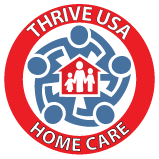The Benefits and Effects of Music for People with Alzheimers
September is World Alzheimer’s Month, an annual Alzheimer’s Disease Association (ADI) movement to raise awareness and challenge the stigma that surrounds dementia. World Alzheimer’s Month began in 2012 with World Alzheimer’s Day taking place on 21 September. This campaign encourages people to take action to combat the stigmatization and raise awareness of the disease.
Music is proving to be a successful treatment for people with Alzheimer’s disease and other forms of dementia. Studies indicate that while dementia causes progressive memory loss and impairment, music memory remains. This means that melodies will sometimes be recalled even after names, faces and phrases are lost. Findings suggest that music for dementia patients can boost mood, reduce anxiety and improve focus and concentration. Best of all, music allows people to interact with happy memories at all stages of dementia.
Research suggests that popular music has the greatest effect on people with dementia. If you want to make a music playlist for a dementia patient, consider the following tips:
- Know the era: Dementia patients are often engaged in music that was popular when they were between the ages of 18 and 25.
- Understand the person’s musicality: when designing a playlist for a person with dementia, think about their past experiences and how they may have been engaged in music in the past. Gospel music will better resonate with a retired minister or pastor. A school song can offer recognition to a retired teacher. Classical music is ideally suited to a concert pianist.
- Think about the entertainment factor: What kinds of musical entertainment did the person enjoy when they were younger? Did they go to the opera regularly, enjoy Broadway shows or go to concerts? The answers will help identify the right kind of music for the playlist.
When you’ve got your music, start arranging it into a playlist based on the time of day. Strong, cheerful, and lively music is best for the mornings, while peaceful, soft, and gentle music is best for the evening. Then look for clues in your loved one’s facial expression and body language as they listen to or interact with the song to understand the influence the music has on them.
There are a wide variety of options for listening to personalized music. Some care teams may have access to CDs and other offline music collections. There are also music apps that make it easy for caregivers to explore songs, save favorites, and create playlists.
- YouTube – The Google-owned video site has millions of songs from different time periods. Accessible both on a desktop computer and on mobile devices, you can build playlists and listen to your selected tunes anytime, anywhere as long as you are connected to the internet. If you want to remove the ads played before each video and enjoy the offline video playback feature, you can also subscribe to YouTube Music Premium. Here is a step-by-step guide on how to create a new playlist on YouTube.
- Spotify – A music-streaming site that boasts a diverse collection of 30 million songs in its library. You can use Spotify on your desktop computer or on mobile devices. Like YouTube, you can also use it for free if you don’t mind the ads. Otherwise, there is also a premium version. See this webpage for instructions on how to create a playlist on Spotify.
- SoundCloud – SoundCloud is a music-streaming site that allows people to upload audio files they produce. If you opt for the paid version, you can eliminate ads and listen to songs and/or other audio files offline. Follow this guide to create a playlist on SoundCloud.
- Amazon Music Unlimited – Amazon launched this on-demand music-streaming service in October 2016. If you have an Amazon Prime membership, you can use the service free of charge. People who own an Amazon Echo—a voice-controlled speaker (to activate the device, just say “Alexa!”) that can deliver information, play music and make online purchases—can access Amazon Music Unlimited through the device besides using their desktop computers and mobile devices. Visit the Amazon Help & Customer Service page to learn how you can build a playlist.
If your loved one has been diagnosed with Alzheimer’s disease, Thrive USA Home Care is here to support you and your family. We help your aging loved one remain in the place they call home, and we support the family caregiver as the disease progresses.


